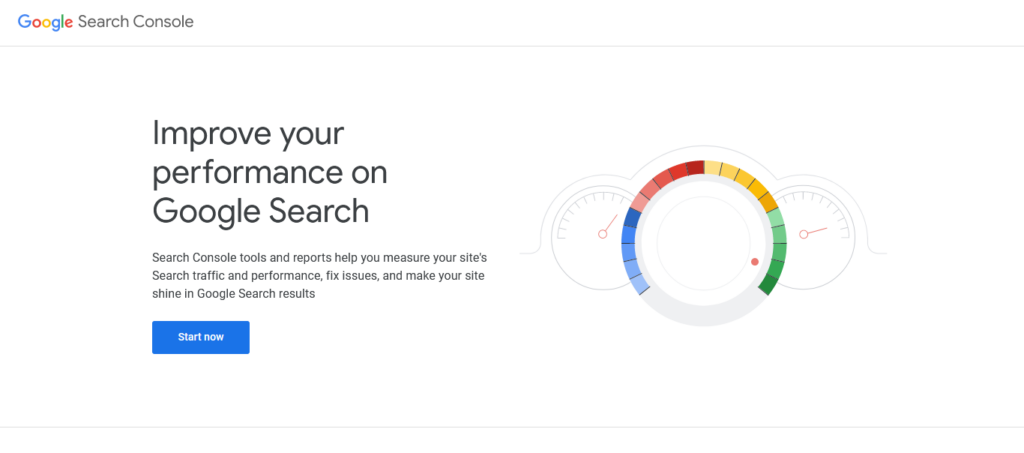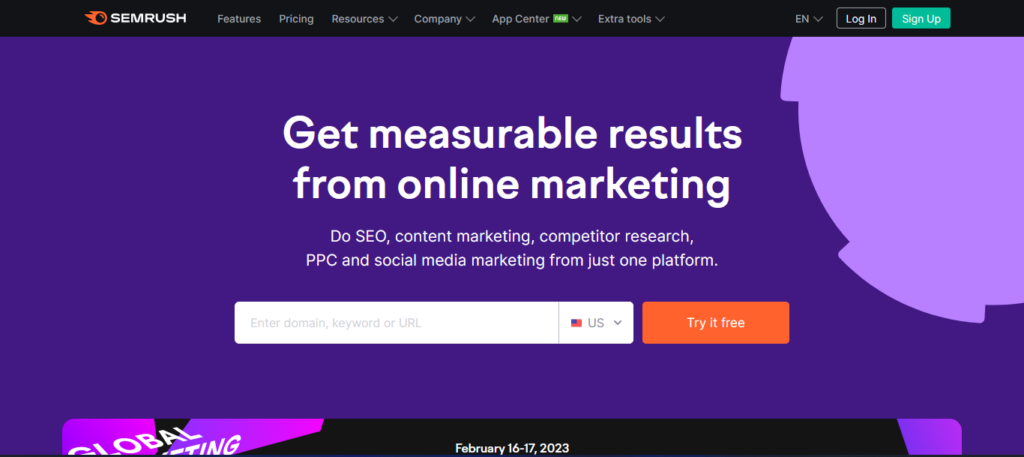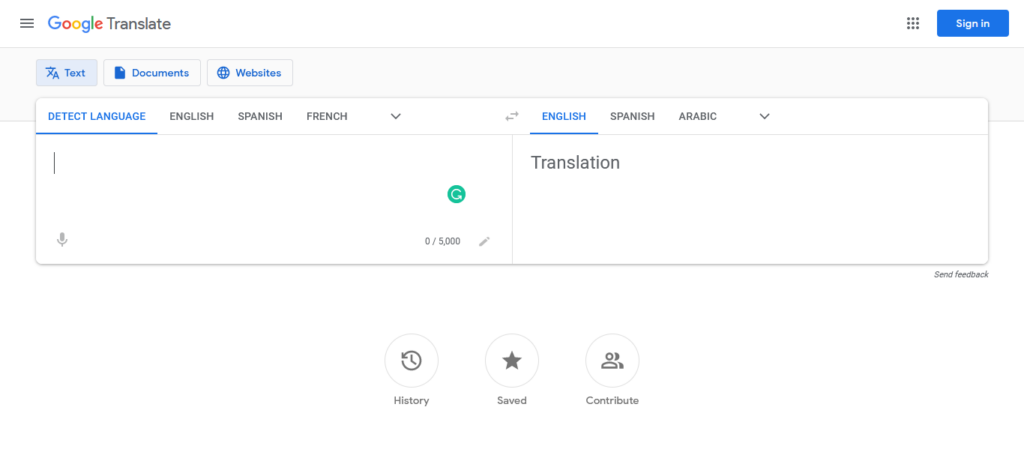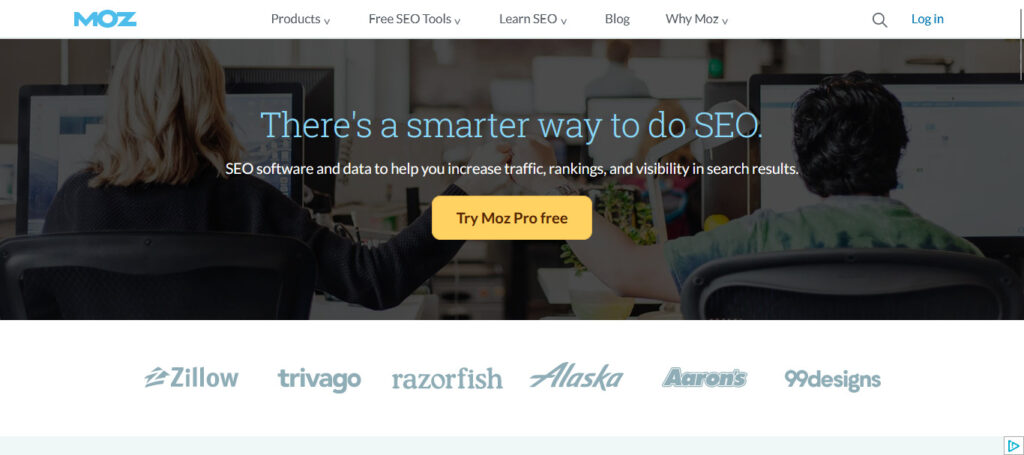Sidhak Verma
Myself Sidhak I am a student and a content writer. I share my ideas on social media and finding ways of earning money online on the internet.
If you are not familiar with international SEO, don’t worry we’ve got your back. Search engine optimization is deep and handled with...

Image Credits: pexels
If you are not familiar with international SEO, don’t worry we’ve got your back. Search engine optimization is deep and handled with care. If you are looking to rank your website internationally or want to target different countries then you should consider using international ranking techniques and tags. Global SEO runs with a few of the tags and techniques along with the basic SEO like Choosing the structure of the website which can (ccTTLDs, Subdomains, or subdirectories). And the use of the “Rel” tags like Hreflang and canonical tags, we will be discussing every possible outcome further in the post.
International SEO is optimizing a website to rank well in search engines for multiple countries, regions, and languages. The main objective is to increase visibility and drive traffic to a website from multiple countries. And help businesses reach a global audience. To succeed in international SEO, it’s essential to understand each target market’s cultural, linguistic, and regional differences and tailor the website accordingly.
A critical aspect of Global SEO is choosing the proper domain structure for the website. This can involve using country-code with top-level domains (ccTLDs), subdomains, or subdirectories. The choice of domain structure can significantly impact the website’s visibility in different countries, so it’s essential to consider each option carefully.
Another important aspect of global SEO is keyword research. This involves identifying relevant keywords for each target country and translating them into the appropriate language. Keyword research is a critical part of the international SEO process as it helps to ensure that the website is optimized for the right keywords and is visible to the target audience.
| Structure | CCTLDs | Sub-domains | Sub-Directories |
| Pros | 1. Target county is clear 2. Enhanced Speed 3. Quickl Local ranking | 1. Use only one single hosting for all the sub-domains. 2. Customized names e.g (spain.example.com) | 1. Easy to Setup 2. Customize names. e.g (example.com/Spain) 3. Easy to report and Track |
| Cons | 1. Too costly, as it will involve buying a lot of domain names and hosting. 2. Hard to maintain so many different domains. 3. Need to have websites in different languages. | 1. Technically Challenging to setup sub-domains 2. Difficult for the users to understand the Url Structure. | 1. Difficult for the users to understand the Url Structure. |
In addition, implementing Hreflang tags is essential for international SEO. These tags help search engines understand which version of a website should be displayed to users based on their language and region. Hreflang tags ensure that the correct version of the website is displayed to users in different countries, which can improve the user experience and increase visibility in search results.
Finally, building high-quality backlinks from reputable websites in different countries is essential to international SEO. Backlinks help increase a website’s credibility and visibility in search results, which can ultimately drive more traffic and leads. To summarise, Global SEO is a complex and ongoing process that requires careful planning and execution. Still, it can help businesses reach a global audience and grow when done correctly.
International SEO works by optimizing a website for search engines to rank well in multiple countries and languages. The process involves the following steps:
International SEO and local SEO are both strategies for optimizing a website for search engines, but they differ in scope and target audience.
Global SEO is optimizing a website audit for search engines to rank well in multiple countries and languages. The main goal is to reach a global audience and increase visibility in search results in multiple markets.
On the other hand, local SEO is the process of optimizing a website for search engines to rank well for local search queries. The main goal is to reach a local audience and increase visibility in search results for a specific geographic location, such as a city or region.
In terms of optimization, Global SEO requires a more comprehensive approach, considering cultural, linguistic, and regional differences in each target market. On the other hand, local SEO focuses more on signals related to a business’s physical location. Such as the address, phone number, and Google My Business listing.
In summary, international SEO is a broader strategy for reaching a global audience, while local SEO is a more targeted strategy for reaching a local audience. Both strategies are essential for businesses looking to reach customers through search engines, and a well-executed international SEO strategy can complement a solid local SEO strategy.
International SEO is important for businesses for several reasons:
With the increasing globalization of commerce and the growth of the internet. Businesses have the opportunity to reach customers all over the world. International Search engine optimization can help businesses to increase their visibility in search engines and reach a global audience.
Businesses can attract organic traffic and increase sales by optimizing a website for search engines in multiple countries and languages.
A well-executed international SEO strategy can improve the user experience for customers in different countries, providing them with relevant and localized content, language-specific customer support, and local currency options.
By optimizing a website for search engines in multiple countries and languages. Businesses can gain a competitive advantage over businesses only focused on a single market.
Compared to other forms of international marketing, such as paid advertising or direct mail. International SEO can be a cost-effective way to reach a global audience and increase sales.
Global SEO requires a strategic and comprehensive approach, but the benefits of increased visibility, traffic, and sales can be substantial for businesses that invest in this critical marketing channel.
A Worldwide SEO strategy is a comprehensive plan for optimizing a website for search engines in multiple countries and languages. An international SEO strategy aims to increase visibility in search results in multiple markets. Reach a global audience, and ultimately increase traffic and sales.
Keyword research is the first step toward Global search engine optimization. This involves identifying keywords relevant to each target market and considering cultural, linguistic, and regional differences. Keyword research helps businesses understand customers’ search behavior in each market and identify the most effective keywords to target.
It is to decide on the website’s best domain structure, such as country-code top-level domains (ccTLDs), subdomains, or subdirectories. The choice of domain structure will impact how search engines view and rank the website. So it is essential to choose the proper structure for each target market.
Content localization is a critical component of an international SEO strategy. This involves creating localized versions of the website for each target market, considering cultural, linguistic, and regional differences. Content localization helps to ensure that the website provides a relevant and personalized experience for customers in each market.
Link building is another crucial aspect of a Global SEO strategy. This involves building high-quality backlinks from reputable websites in each target market. Backlinks help increase the authority and credibility of the website, which can positively impact search engine rankings.
Technical optimization is also a vital component of a Global SEO strategy. This involves ensuring that the website is technically optimized for search engines, including implementing hreflang tags and adequately using the robots.txt file. Technical optimization helps search engines understand the website’s structure and the relationships between different pages and countries.
Finally, it is essential to regularly monitor and analyze the website’s performance in each target market, including search engine rankings, traffic, and conversion rates. You can use this information to adjust and improve the international SEO strategy over time, ensuring that the website continues to be optimized for search engines in each target market.
Whether your business needs an international SEO strategy depends on several factors. Including your target market, target audience, and the nature of your business. If your business targets customers in multiple countries or provides products or services in multiple languages. Then an international SEO strategy is likely beneficial.
International SEO can help your business to:
If your business is already established in one country and has yet to make plans to expand globally. Then an international SEO strategy may not be necessary. However, an international SEO strategy is likely a valuable investment if your business has global ambitions and wants to reach customers in multiple countries and languages.
Several factors can affect international SEO, including
The language used on your website and the languages of your target market can impact the success of your international SEO strategy. Ensure that the language used on your website is appropriate for your target market and is translated accurately and effectively.
The domain structure you choose for your website can impact how search engines view and rank your website in different countries. For example, using a country-code top-level domain (ccTLD) for each target market can benefit international SEO.
The quality and relevance of your localized content can impact the success of your international SEO strategy. Make sure that the content on your website is tailored to the needs and interests of your target market, taking into account cultural, linguistic, and regional differences.
The quality and relevance of backlinks from reputable websites in each target market can impact the success of your Global SEO strategy. Make sure to build high-quality backlinks from websites relevant to your target market.
Technical optimization, including using Hreflang tags and proper use of the robots.txt file. Can impact how search engines view and rank your website. Make sure your website is technically optimized for search engines in each target market. And solving the canonical issue.
The level of competition in each target market can impact the success of your international SEO strategy. It is essential to understand the competitive landscape in each target market and to adjust your strategy accordingly.
Understanding customers’ search behavior in each target market can help you identify the most effective keywords to target and optimize your website accordingly.
Developing a Global SEO strategy is a process that involves several key steps. The following is a more in-depth explanation of each step:
The first step in developing an international SEO strategy is identifying the target markets you want to reach. This involves researching the countries and languages you want to target and analyzing customers’ search behavior in each target market. This will give you a better understanding of the most relevant keywords to target and the needs and interests of your target audience.
The next step is to decide on the domain structure you will use for your website. This involves choosing between using a single domain or multiple domains for each target market or country-code top-level domains (ccTLD) for each target market. Or going with Sub-domain or a sub-directory with domain structure.
To reach a global audience effectively, it’s important to translate and localize the content on your website. This involves accurately translating the content into the languages of your target markets and tailoring the content to the cultural, linguistic, and regional differences of each target market.
Once the content has been translated and localized. It’s time to optimize the website for search engines in each target market. This involves using relevant keywords, ensuring technical optimization, and using Hreflang tags, Canonical tags, and the robots.txt file appropriately.
Code Sub-directories/folders
<link rel="alternate" href="http://example.com" hreflang="es-es" /><link rel="alternate" href="http://example.com/fr/" hreflang="fr-fr" /><link rel="alternate" href="http://example.com/pt/" hreflang="pt-pt" />
"The same annotations should appear on your French and Portuguese homepages."Code for sub-domains
<link rel="alternate" href="http://kr.example.com/hotels/budget" hreflang="ko" />
<link rel="alternate" href="http://www.example.com/hotels/budget" hreflang="en" />Building high-quality backlinks from reputable websites in each target market is integral to international SEO. This will help increase the visibility and credibility of your website in each target market and improve your search engine rankings.
Regularly monitoring the performance of your website in each target market and adjusting the strategy as needed is an essential part of any international SEO strategy. It’s also essential to stay up to date with changes in search engine algorithms and to adapt your strategy accordingly.
Finally, web analytics is an essential part of any international SEO strategy. This will help you track the performance of your website and measure the impact of your Worldwide SEO efforts.
Google Search Console is a free web service offered by Google that helps website owners monitor their website’s performance in Google search results. It provides valuable insights into how Google crawls and indexes your website and can help you identify any technical issues affecting your website’s visibility in search results.
With Google Search Console, you can view your website’s search traffic, and monitor it. Which keywords are driving traffic? And see which pages are performing best in search results. Additionally, it can help you identify any crawl errors or security issues and provide a way to submit sitemaps and track your website’s backlinks.

Google Search Console is a valuable tool for website owners who want to improve their website’s visibility. Google search results and monitor the performance of their website in real time. Using Google Search Console. You can make informed decisions about your website’s SEO strategy and improve your website’s ranking in search results.
Google Analytics is a free web analytics service offered by Google that provides insights into the traffic and behaviour of your website’s visitors. With Google Analytics, you can track various metrics related to your website’s traffic. Including the number of visitors, page views, the average duration of a session, and the bounce rate.
Additionally, Google Analytics provides valuable insights into the demographics and interests of your website’s visitors, their geographic location, and the devices they use to access your website. This information can help you better understand your target audience and make informed decisions about your website’s content and design.

Google Analytics also integrates with other Google products, such as Google AdWords and Google Search Console. Allowing you to get a comprehensive view of your website’s performance. With this information, you can optimize your website for search engines and improve the user experience for your visitors.
Google Analytics is a powerful and versatile tool that can help you better understand your website’s performance and make informed decisions about your website’s SEO and marketing strategies.
SEMrush is a digital marketing tool that provides many features to help businesses improve their search engine optimization (SEO) and online visibility. It helps businesses track their website’s rankings, identify technical SEO issues, monitor their backlink profile, and stay ahead of competitors. SEMrush provides specific features for international SEO. Including the ability to track rankings in different countries, and analyze international competitors’ backlink profiles. Identify keywords that are popular in specific countries. It is a comprehensive tool that can help businesses make informed decisions about their SEO strategy and reach their marketing goals.

Google Translate is a free online language translation service provided by Google. It allows users to translate text, speech, images, and web pages from one language to another. Google Translate supports over 100 languages, making it a valuable tool for businesses looking to expand into international markets.
For Global SEO, Google Translate can help businesses translate their website content into different languages. This can help improve the website’s visibility in search engines for users in those countries, making it easier for potential customers to find and engage with the business. However, automatic translation services like Google Translate can result in incorrect or awkward translations, so it may be necessary to use professional translators to ensure high-quality translations of your website content.

Google Translate can be a helpful tool for businesses looking to expand into international markets. It is separate from professional translation services. High-quality translations are critical to the success of an international SEO strategy. As they can help improve your website’s visibility and appeal to potential customers in different countries.
It is a digital marketing software company that provides tools and resources to help businesses improve their search engine optimization (SEO) and online visibility. Moz offers a range of features, including keyword research, site audit, backlink analysis, and competitor analysis.
One of the critical features of Moz is its Moz Pro subscription. Which provides access to a range of advanced SEO tools and resources. With Moz Pro, businesses can track their website’s search engine rankings. Identify technical SEO issues monitor their backlink profile, and research keywords to target for their SEO strategy.

Moz also provides various educational resources to help businesses stay up-to-date on the latest SEO best practices and strategies. Including blog posts, webinars, and educational guides. This can be particularly useful for businesses looking to develop an international SEO strategy. As the SEO landscape can differ in different countries and regions.
International SEO best practices are techniques, and strategies businesses can use to optimize their website for search engines in different countries and regions. Here are some of the essential best practices for Worldwide SEO:
Research the target markets you want to reach and understand their language, culture, and search behaviors. This information can inform your international SEO strategy and help you create content that will appeal to potential customers in those markets.
Hreflang tags are HTML attributes that help search engines understand a specific web page’s language and target country. They can help ensure that the correct website version is shown to users in different countries. Improving your website’s visibility and engagement in those markets.
Create high-quality, localized content that speaks to the needs and interests of your target audience. This can help improve the relevance and authority of your website in different countries and regions.
Use tools like Google Search Console and Google Analytics to monitor and track your website’s performance in different countries. This information can help you identify opportunities for improvement and make data-driven decisions about your international SEO strategy.
Building backlinks from relevant, high-quality websites can help improve your website’s authority and trust in search engines. When building backlinks for a Global SEO strategy. It is essential to focus on acquiring links from websites that are relevant to your target market and are located in that country or region.
Use keywords in the target country’s language to help search engines understand the relevance of your website for users in that country. Conducting keyword research in the target language can help you identify the most relevant and effective keywords to target.
In conclusion, international SEO is a crucial aspect of digital marketing for businesses looking to expand their reach and target customers in other countries. To develop a successful international SEO strategy, businesses must research target markets, use Hreflang tags, create high-quality, localized content, monitor and track their website’s performance, build backlinks from relevant, high-quality websites, and use keywords in the language of the target country. Utilizing tools like Google Search Console, Google Analytics, SEMrush, Ahrefs, Google Translate, and Moz can also help businesses optimize their website for search engines in other countries. By following these best practices, businesses can improve their visibility, engagement, and conversions in international markets. Helping them achieve their global growth goals.